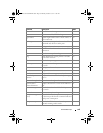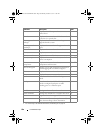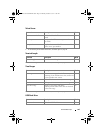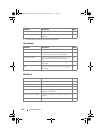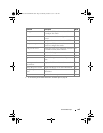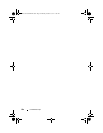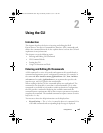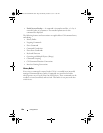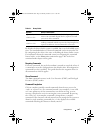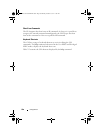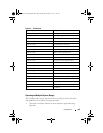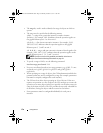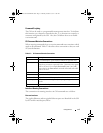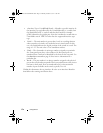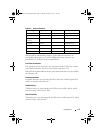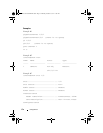
Using the CLI 167
Table 2-1. History Buffer
By default, the history buffer system is enabled, but it can be disabled at any
time. The standard number of 10 stored commands can be increased to 216.
By configuring 0, the effect is the same as disabling the history buffer system.
For information about the command syntax for configuring the command
history buffer, see the history size command on page 1409 in the Line
command mode chapter of this guide.
Negating Commands
For many commands, the prefix keyword no is entered to cancel the effect of
a command or reset the configuration to the default value. All configuration
commands have this capability. This guide describes the negation effect for
all commands to which it applies.
Show Command
The show command executes in the User Executive (EXEC) and Privileged
Executive (EXEC) modes.
Command Completion
CLI can complete partially entered commands when the user presses the
<tab> or <space> key. If a command entered is not complete, is not valid,
or if some parameters of the command are not valid or missing, an error
message is displayed to assist in entering the correct command. By pressing
the <tab> key, an incomplete command is changed into a complete
command. If the characters already entered are not enough for the system to
identify a single matching command, the <?>key displays the available
commands matching the characters already entered.
Keyword Source or Destination
Up-arrow key
<Ctrl>+<P>
Recalls commands in the history buffer, beginning with the
most recent command. Repeats the key sequence to recall
successively older commands.
Down-arrow key
<Ctrl>+<N>
Returns to more recent commands in the history buffer after
recalling commands with the up-arrow key. Repeating the key
sequence recalls more recent commands in succession.
2CSPC4.XCT-SWUM2XX1.book Page 167 Monday, October 3, 2011 11:05 AM



